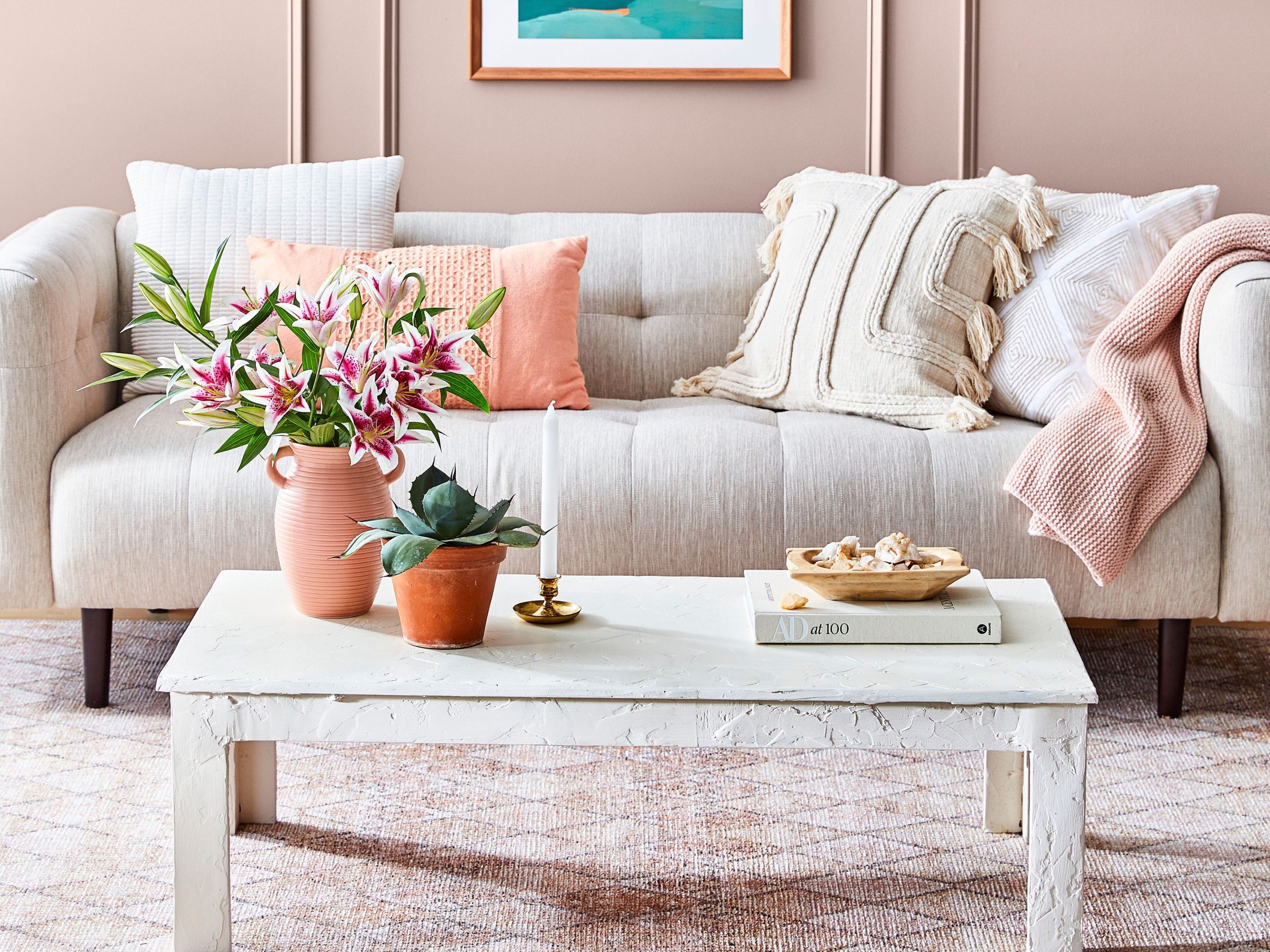
Though nothing rivals a classic French manicure, the milky nail trend that’s swept through the beauty world has earned its place as a staple. These nails are pearl-like, nearly translucent, and neutral enough to work for any occasion, from casual to classy. If you like the sound of sheer and shimmery in the home, you’re in luck—the trend has made its way into interior design.
Milky paint is the perfect way to give your walls a seasonal update (especially as a winter to spring transition), offering a peaceful and clean refresh. The look isn’t just limited to white, either—light pinks, blues, greens, and purples also emulate the frosted freshness of the iridescent look. Here’s what expert designers have to say about applying the milky nail atmosphere to any room of your home.
Where Milky Paint Works
If you’re looking for a soft and calming atmosphere, milky paint is the way to go. Interior designer Malory Quarnberg, CEO and owner of Dorothy Jean Decor, says to start with smaller rooms that serve peaceful purposes.
“These colors work well in almost any room in the home, but mostly in bedrooms, nurseries, and bathrooms where you want to add some light,” she says.
Pairing these painted walls with wood is an effortless combo—the light hues naturally blend with light- and medium-toned wood shades. That means the milky look works with just about any design style, from contemporary to kitschy. The next-to-translucent hues also serve as a backdrop for more playful pops of color, so you’re free to experiment with maximalist accent pieces.
Be sure to look beyond the walls for even more milky inspiration, though. Consider a milky pink or blue tone for kitchen or bathroom cabinets for a dreamy, retro look that brightens every morning. Make it more on-trend by going for a checkered floor that incorporates milky hues or an opaque grey cabinet paired with a marble floor.
If you love the trend but can’t swing an entire wall or set of kitchen cabinetry, revamp your wood accent furniture like chairs or side tables with milky paint—mix and match the colors for a cohesive and elevated approach to color scheme.
Stunning Milky Paint Colors for the Home
When it comes to specific shades, Quarnberg recommends white hues like Silos White by Magnolia Home, White Dove by Benjamin Moore, or Alabaster by Sherwin Williams. For a more playful take, consider interior designer Amy Howard’s Toscana Milk Paint line—inspired by patina found on European antiques, the line spans milky greens, light grays, and pink and yellow hues.
Once you have your color, it’s key to choose a finish that’s right for your space, and there are so many options that work well with milky paint. Quarnberg says that the paint’s finish has a big impact on the final look, and she recommends an eggshell or satin finish to go with these silky tones.
“This sheen is a good compromise between matte and glossy,” she explains. “It has a slight sheen that adds just the right depth and dimension to your walls, without being too shiny or flat.”
How to Make the Look Your Own
If you’re a more experienced DIYer, working with an interior designer, or simply looking for a different take on the milky paint trend, designer Laura Sotelo, co-founder of Olive Ateliers recommends experimenting with Venetian plaster for a complex and calming finish.
“This involves applying layers of plaster mixed with marble dust and pigment, resulting in a smooth surface, adding depth and dimension to a space,” she says.
